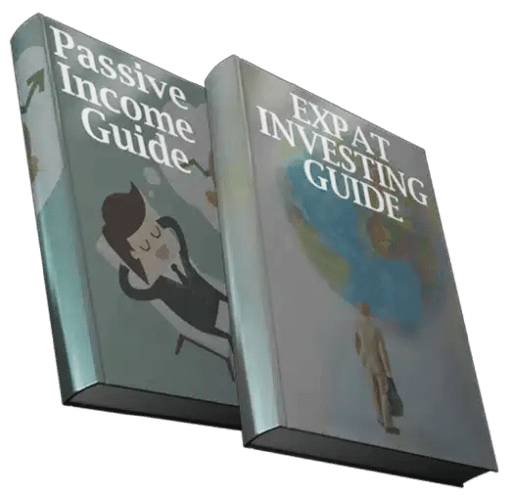Expat financial advisors in East Timor play an essential role in navigating the country’s unique economic conditions. East Timor, also known as Timor-Leste, boasts a developing economy with potential for growth.
However, this growth comes with inherent financial complexities that require expert navigation. Whether you’re looking to invest in East Timor’s burgeoning sectors or save for your future here, the insight of an expat financial advisor is crucial.
Furthermore, the regulatory environment in East Timor can be difficult for expats to comprehend without assistance. Expat financial advisors in East Timor have an in-depth understanding of these regulations, ensuring your financial strategies are compliant and effective.
I will compare some of the options available locally, alongside more portable, online, and international options like what we offer.
It makes sense to have a portable option as an expat, as opposed to a localized one, and that is something we specialize in.
If you want to invest as an expat or high-net-worth individual, which is what I specialize in, you can email me (advice@adamfayed.com) or use WhatsApp (+44-7393-450-837).
Table of Contents
Role of Expat Financial Advisors in East Timor
Expat financial advisors in East Timor play a crucial role in helping foreign residents navigate their financial journey in this unique region. These professionals provide valuable services that help expatriates understand and manage the complexities of their financial affairs in an unfamiliar environment. Here are some key areas where they provide significant value:
Navigating the Local Financial Climate
Expat financial advisors actively navigate East Timor’s local financial climate on behalf of their clients. They guide expatriates in understanding the local financial regulations, tax laws, and banking systems. They scrutinize the local market conditions to identify promising investment opportunities and inform their clients about potential financial risks. By doing so, they enable their clients to make informed decisions and optimize their financial strategies in the East Timor environment.
Bridging Cultural and Language Barriers
The ability of expat financial advisors to bridge cultural and language barriers proves instrumental. These professionals often have a bilingual ability or work closely with local experts to overcome language barriers. They understand the nuances of East Timor’s culture, allowing them to communicate effectively with local institutions on behalf of their clients. This bridging role eliminates misunderstandings, ensuring smooth financial transactions and helping expats build strong relationships within the local community.
Specialized Services for Expats
Expat financial advisors offer specialized services that cater to the unique needs of expats. They understand that expatriates often have different financial needs and considerations compared to local residents. For instance, they offer guidance on international wealth management, offshore banking, retirement planning across multiple jurisdictions, and international tax considerations. These specialized services ensure that expatriates can manage their global finances efficiently while living in East Timor, bringing peace of mind and financial security.

Expat financial advisors in East Timor play a crucial role in helping foreign residents navigate their financial journey in this unique region.
Why Expats Need Financial Advisors in East Timor
Expats require the assistance of financial advisors in East Timor for a multitude of reasons, with these professionals proving indispensable in three key areas:
Complexity of International Finances
Managing finances internationally presents a complex challenge for many expats. Expat financial advisors simplify this process. They keep abreast of the global and local financial landscapes and effectively manage the expat’s finances across multiple jurisdictions. They help expats understand and comply with international financial regulations and assist in streamlining bank accounts, retirement plans, and investments across different countries.
Tax Implications for Expats
Expat financial advisors adeptly navigate the complex tax laws that expats face in East Timor and their home countries. They ensure that their clients fully understand their tax obligations and devise strategies to minimize their tax liability. Additionally, they help expats take advantage of tax treaties between East Timor and their home country, avoiding double taxation and maximizing financial efficiency.
Long-term Financial Planning Abroad
Long-term financial planning takes a unique turn for expats living abroad. Expat financial advisors assist in creating a comprehensive financial plan that aligns with the expat’s personal goals and lifestyle. They provide insights on real estate investments, retirement planning, college savings for children, and long-term wealth preservation. With their assistance, expats can confidently plan for a secure financial future in East Timor.
Identifying Competent Expat Financial Advisors in East Timor
Identifying the right financial advisor is crucial. Here’s what expats should look for:
Required Certifications and Licenses
Competent expat financial advisors hold the necessary certifications and licenses to practice. They usually possess credentials such as Certified Financial Planner (CFP) or Chartered Financial Analyst (CFA). These certifications guarantee that the advisor has undergone rigorous training and adheres to high ethical standards.
Experience in the East Timor Market
The best financial advisors have extensive experience in the East Timor market. They understand the intricacies of local financial and tax regulations, banking systems, and investment opportunities. Their deep knowledge of the local market can help expats avoid potential pitfalls and capitalize on the opportunities available.
Expat Testimonials and Reviews
Positive testimonials and reviews from expats who have worked with financial advisors can provide valuable insights. These testimonials reflect the advisor’s competency, reliability, and effectiveness in managing expat finances. Expats should consider advisors with a strong track record of excellent service.
Services Offered by Expat Financial Advisors in East Timor
Expat financial advisors in East Timor offer a wide array of services, including:
Financial Planning Services
Expat financial advisors offer comprehensive financial planning services tailored to the unique needs of expats. They assist with budgeting, retirement planning, education funding, estate planning, and more, ensuring that all aspects of an expat’s financial life are well-coordinated.
Investment Management
Investment management is another key service offered. Advisors devise customized investment strategies that align with the expat’s financial goals and risk tolerance. They constantly monitor the performance of these investments and make necessary adjustments in response to changes in market conditions or the expat’s circumstances.
Tax Consulting
Expat financial advisors offer specialized tax consulting services for expats. They guide their clients through the complexities of East Timor’s tax system and the tax implications in their home country. They help expats structure their finances in a tax-efficient way, ensuring full compliance with all tax laws while minimizing tax liabilities.

Advisors devise customized investment strategies that align with the expat’s financial goals and risk tolerance.
Evaluating the Cost of Hiring Expat Financial Advisors in East Timor
Understanding the cost of hiring expat financial advisors in East Timor is crucial. Here’s what to consider:
Fee Structures
Expat financial advisors charge their clients using different fee structures. Some operate on a commission-based model where they earn a percentage of the product or investment they sell. Others follow a fee-based model, charging a flat fee for their services or a percentage of the assets they manage. You should understand and compare these fee structures to find a cost-effective solution that meets your financial needs.
Comparing Costs among Different Advisors
Different advisors may offer varying fee structures and rates. It’s important to compare these costs to make an informed decision. Request detailed fee schedules from several advisors and weigh them against the services they provide. This comparison will give you a clearer picture of the market and help you identify a reasonably priced advisor who can meet your needs.
Understanding Value for Money
Cost shouldn’t be the only factor in your decision. You also need to consider the value you’ll receive for your money. Look at the range of services provided, the advisor’s experience and expertise, and their track record with other expats. High-quality advice and service can justify a higher cost if it leads to better financial outcomes.
Building Effective Relationships with Your Financial Advisor
Building an effective relationship with your financial advisor is vital. Here’s how:
Importance of Trust and Communication
Trust and communication form the cornerstone of a successful relationship with your financial advisor. You should feel confident in their abilities and comfortable discussing your financial situation and goals with them. Regular and open communication helps ensure your financial strategy remains aligned with your changing needs and circumstances.
Setting Expectations
Clear expectations between you and your advisor are vital. Discuss and agree on the frequency and mode of communication, response times, the type of advice and support you need, and how you’ll measure success. Having clear expectations from the outset helps prevent misunderstandings and ensures a productive relationship.
Continual Assessment of Financial Goals
Your financial goals may evolve over time, and your relationship with your financial advisor should reflect this. Regularly review and reassess your financial goals with your advisor. They can help you adjust your financial strategy as needed, ensuring it remains aligned with your long-term objectives.
Digital Solutions and Tools Utilized by Expat Financial Advisors in East Timor
Expat financial advisors in East Timor utilize several digital solutions and tools to better serve their clients:
Online Consultation and Meetings
Advisors frequently conduct online consultations and meetings to facilitate communication with expats. These virtual meetings provide a convenient platform for discussing financial strategies, reviewing investment portfolios, and addressing any questions or concerns you may have.
Digital Investment Platforms
Many advisors utilize digital investment platforms to manage and monitor their clients’ investments. These platforms offer real-time tracking of investment performance, risk assessment tools, and automatic rebalancing features. They provide a streamlined and efficient way of managing your investments.
Cybersecurity Measures
Given the digital nature of their work, financial advisors prioritize cybersecurity. They implement robust cybersecurity measures to protect your financial data from unauthorized access. These measures may include encryption technologies, secure client portals, and stringent data privacy policies. Always confirm that your advisor takes your data security seriously.
Impact of East Timor’s Economic Trends on Expat Investments
East Timor’s economic trends can significantly impact expat investments. Understanding these trends and their implications is a crucial part of successful financial management for expatriates living in the country.
Tracking Economic Indicators
Expat financial advisors actively track various economic indicators in East Timor. These indicators may include inflation rates, GDP growth, interest rates, unemployment rates, and more. By keeping a close eye on these indicators, advisors can identify emerging economic trends and potential risks that may impact their clients’ financial strategies.
Adjusting Investment Strategies
As economic conditions change, so should investment strategies. Expat financial advisors make timely adjustments to their clients’ investment portfolios in response to these changes. They might rebalance portfolios, switch investment assets, or modify risk levels, always aiming to align the strategies with the clients’ financial goals and risk tolerance.
Opportunities Amid Economic Challenges
Economic challenges often bring about investment opportunities. Expat financial advisors use their expertise to spot these opportunities amid economic downturns or volatile market conditions. They guide their clients to seize these opportunities, potentially turning economic challenges into financial gains.

Expat financial advisors help their clients understand and acquire appropriate insurance coverage.
Preparing for Financial Emergencies in East Timor: The Advisor’s Role
Financial advisors play a critical role in preparing their clients for financial emergencies. Here’s how:
Building an Emergency Fund
One of the first steps in preparing for financial emergencies is building an emergency fund. Financial advisors guide their clients on how much to save, considering factors like monthly expenses, income stability, and family size. They may recommend suitable financial products where clients can store their emergency funds for easy access.
Insurance Planning
Insurance planning is another critical aspect of emergency preparedness. Expat financial advisors help their clients understand and acquire appropriate insurance coverage. This coverage can include health insurance, property insurance, and even life insurance, all aimed at providing financial protection against unforeseen events.
Addressing Currency Risks
Living in a foreign country introduces potential currency risks. Financial advisors help their clients manage these risks. They might suggest strategies like diversifying investments across different currencies or using financial instruments that hedge against currency fluctuations.
Conclusion
In conclusion, expat financial advisors in East Timor play a pivotal role in helping expatriates navigate the often complex landscape of international finance.
With their comprehensive knowledge of both local and international financial laws, taxation regulations, and economic climates, they tailor financial plans that align with each expat’s unique needs. Their adept handling of diverse fee structures, currency risks, and investment strategies makes them an invaluable ally for expats seeking to thrive financially in a foreign country.
Whether expats are building an emergency fund, adjusting to shifting economic indicators, or seeking to maximize returns amid economic challenges, expat financial advisors provide the essential guidance and support. They enable expats to confidently make well-informed financial decisions, ensuring their financial well-being and future prosperity in East Timor.
Pained by financial indecision? Want to invest with Adam?

Adam is an internationally recognised author on financial matters, with over 760.2 million answer views on Quora.com, a widely sold book on Amazon, and a contributor on Forbes.



